A guide to the Galapagos
A trip to the Galapagos is likely to be a once in a lifetime holiday so its important to visit when its at its best. But when is that? Being on the Equator, it is a year round destination, but with different wildlife and sea temperatures throughout the seasons, certain months suit different travellers best.
Typically, the start of the year is sunny but with short, sharp showers and June to November are cooler though warm but the highlands shrouded in mist. The months in between these seasons offer a good combination of favourable weather and wildlife activity. Heres our guide for getting the best out of this truly unique part of the world.
January March
Theres plenty of sunshine but days are interspersed with heavy but sporadic showers. Green sea turtles begin arriving to lay their eggs and the marine iguanas found on Espanola Island change colour to show off their bright shades of red and blues. Sea temperatures are at their warmest (25 °C) and greater flamingos and Nazca boobies are nesting.

 April June
After the main rains, the islands are lush and green. Waved albatross and the iconic blue-footed boobies start their courting season, eggs of the marine iguana and sea turtles begin to hatch and the magnificent frigate bird and humpback whales are often spotted in North Seymour. From June the misty dry season often referred to as the garua begins.
April June
After the main rains, the islands are lush and green. Waved albatross and the iconic blue-footed boobies start their courting season, eggs of the marine iguana and sea turtles begin to hatch and the magnificent frigate bird and humpback whales are often spotted in North Seymour. From June the misty dry season often referred to as the garua begins.

 July September
July is a great month for birdwatchers: flightless cormorants and blue-footed boobies are breeding and nesting, Galapagos penguins are courting on Bartolome Island, migrant shore birds arrive and frigate bird chicks start hatching. Whales and dolphins are spotted off Isabela Islands western coast. The seas are at their coolest and can be choppy in more open waters.
July September
July is a great month for birdwatchers: flightless cormorants and blue-footed boobies are breeding and nesting, Galapagos penguins are courting on Bartolome Island, migrant shore birds arrive and frigate bird chicks start hatching. Whales and dolphins are spotted off Isabela Islands western coast. The seas are at their coolest and can be choppy in more open waters.


 October December
Galapagos fur seals start their mating season, giant tortoises are laying their eggs and blue-footed boobies can be seen with their newly-hatched chicks. By November the seas are calm, skies are clearer and temperatures are warming up in both the sea and air. Its possible to snorkel with curious young sea lions. Baby giant tortoises start hatching and sea lions and iguanas are breeding.
October December
Galapagos fur seals start their mating season, giant tortoises are laying their eggs and blue-footed boobies can be seen with their newly-hatched chicks. By November the seas are calm, skies are clearer and temperatures are warming up in both the sea and air. Its possible to snorkel with curious young sea lions. Baby giant tortoises start hatching and sea lions and iguanas are breeding.
 Katie Cosstick is the PR Manager at Cox & Kings.
If you would like to be a guest blogger on A Luxury Travel Blog in order to raise your profile, please contact us.
Katie Cosstick is the PR Manager at Cox & Kings.
If you would like to be a guest blogger on A Luxury Travel Blog in order to raise your profile, please contact us.
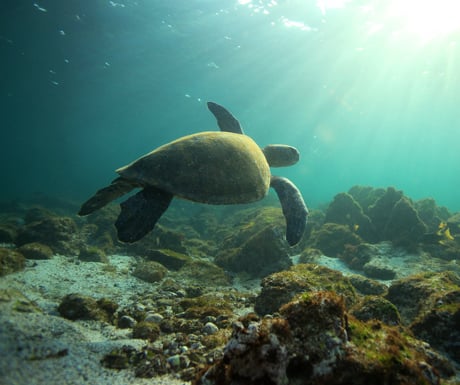
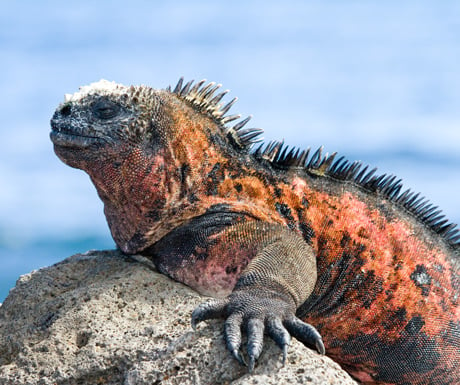 April June
After the main rains, the islands are lush and green. Waved albatross and the iconic blue-footed boobies start their courting season, eggs of the marine iguana and sea turtles begin to hatch and the magnificent frigate bird and humpback whales are often spotted in North Seymour. From June the misty dry season often referred to as the garua begins.
April June
After the main rains, the islands are lush and green. Waved albatross and the iconic blue-footed boobies start their courting season, eggs of the marine iguana and sea turtles begin to hatch and the magnificent frigate bird and humpback whales are often spotted in North Seymour. From June the misty dry season often referred to as the garua begins.
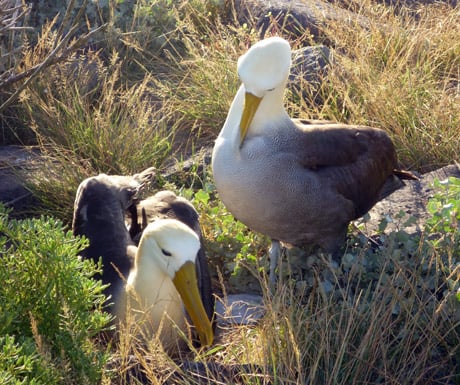
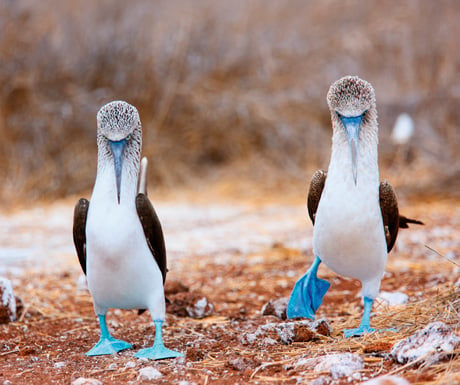 July September
July is a great month for birdwatchers: flightless cormorants and blue-footed boobies are breeding and nesting, Galapagos penguins are courting on Bartolome Island, migrant shore birds arrive and frigate bird chicks start hatching. Whales and dolphins are spotted off Isabela Islands western coast. The seas are at their coolest and can be choppy in more open waters.
July September
July is a great month for birdwatchers: flightless cormorants and blue-footed boobies are breeding and nesting, Galapagos penguins are courting on Bartolome Island, migrant shore birds arrive and frigate bird chicks start hatching. Whales and dolphins are spotted off Isabela Islands western coast. The seas are at their coolest and can be choppy in more open waters.
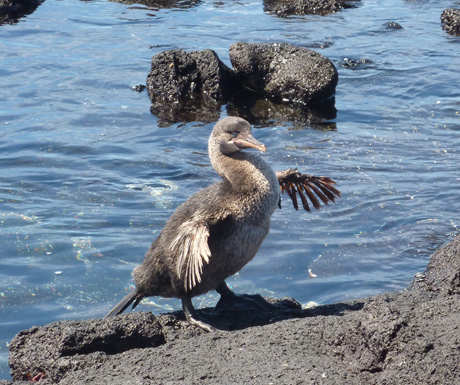
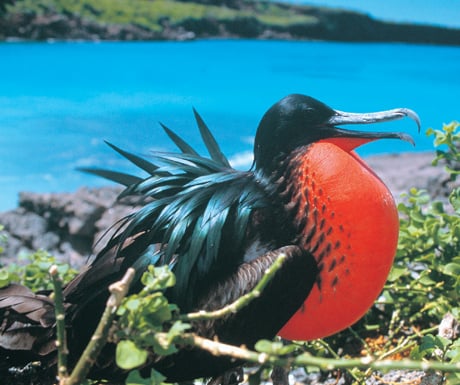
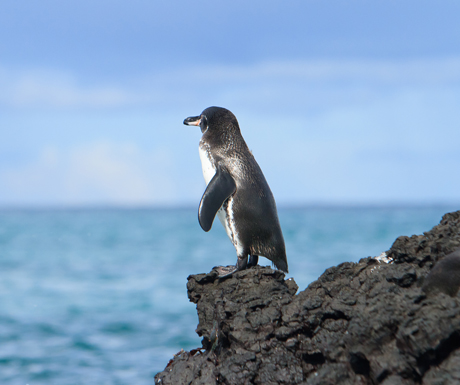 October December
Galapagos fur seals start their mating season, giant tortoises are laying their eggs and blue-footed boobies can be seen with their newly-hatched chicks. By November the seas are calm, skies are clearer and temperatures are warming up in both the sea and air. Its possible to snorkel with curious young sea lions. Baby giant tortoises start hatching and sea lions and iguanas are breeding.
October December
Galapagos fur seals start their mating season, giant tortoises are laying their eggs and blue-footed boobies can be seen with their newly-hatched chicks. By November the seas are calm, skies are clearer and temperatures are warming up in both the sea and air. Its possible to snorkel with curious young sea lions. Baby giant tortoises start hatching and sea lions and iguanas are breeding.
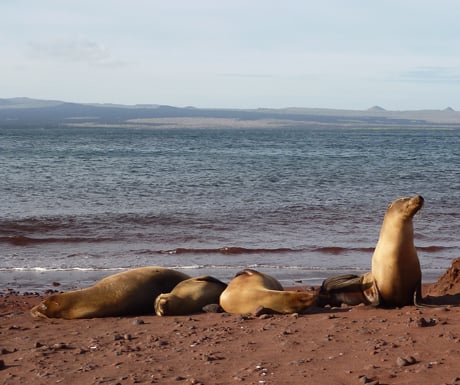 Katie Cosstick is the PR Manager at Cox & Kings.
If you would like to be a guest blogger on A Luxury Travel Blog in order to raise your profile, please contact us.
Katie Cosstick is the PR Manager at Cox & Kings.
If you would like to be a guest blogger on A Luxury Travel Blog in order to raise your profile, please contact us.Did you enjoy this article?
Receive similar content direct to your inbox.


My cousin’s wife has her PhD in Biology and majored in Ornithology. They went to the Galapagos Islands several years ago. Her pictures were mainly just birds, and in particular, smaller birds like finches. There were so many different color variations and different beak sizes. Surely, this is a bird watcher’s paradise.
It’s a great destination for all types of wildlife enthusiasts but definitely one for bird watchers. You can’t help but love the blue-footed boobies but the red variant is just as interesting. Albatross, frigate birds, penguins and finches… the list goes on and on!
This place is where Darwin made his observations amd let him to elucidate his theories about the origin of the species, evolution and species fitness. It’s a place to discover the nature for real, there are several islands to visit and ppenty of acticitues to do, e.g. Diving and you’ll find unique creatures. Is the place one in a milion to visit.
This place is on my dream list. Very well written and great photos.
I have been fortunate enough to a lot of the world and the wildlife around it, I absolutely love birdlife, those blue footed boobies look amazing, I’m pretty sure I saw soe whilst in Australia and Christmas island.
I’m not surprised there are different things to see and do every month. I think the timeframe from October to December seems to be the most attractive time frame for me to visit to see all the new births, if it is even possible to get that close to the wildlife, or at least with large zoom lenses
It feels like there’s sunshine at most times of year and I must say I’d be delighted to go any time!
But I want to see it all! You can’t ask me to pick just one season. If only I could stay for the year…. I can but dream! And in the meantime visit virtually through others eyes. Such a fabulous place.
This is somewhere that dreams are made I think – I can’t imagine going so far, but a few friends have and I am totally bought into doing it – one day!
Beautiful pictures. April-June sounds ideal for us. Being a reptile enthusiast, I’d love to see the giant tortoises and marine iguanas from up close!
Thank you for all the comments. It’s definitely somewhere to put on your wishlist…a good way to decide when to go is if you’re combining with somewhere else. Peru works well with the Galapagos but it’s the rainy season at Machu Picchu from December – March so I would avoid both at that time. Hope you all make it there at some point… so worth the long flight there!!
We are going at the end of June for a 5 night cruise. Any packing tips? Weather looks to be cool around 70s and then off to Peru and Macchu Picchu. My teen boys are looking forward to seeing the diverse landscape and animals especially the penguins. Thanks.
Hi Shari
You’ll need wetsuits for swimming but your boat will usually provide these – worth checking with them. I would expect it to be warm in the day but could be chilly in the evenings. In Peru, it will be winter on the coast (light jumper and a jacket) but it will be hot up in the Andes during the day and really cold in the evening/mornings. You’ll need to pack a bit of everything! I’d also recommend taking waterproof shoes – Tiva or similar – as you’ll do a mix of wet and dry landings during the Galapagos cruise. Your operator should be able to give you more details of what they recommend you packing though.
Hope that helps.
Katie
Some beautiful pictures here! The Galapagos’ highlight really is their unique wildlife. Thanks so much for the look into that!
Is there any travel restriction in Galapagos to protect its unique wildlife and ecology? Means how many tourists can travel in a particular month/time?
Hi Deepak. I don’t know the exact figures for tourist numbers but boats are very strictly monitored and there are limits for how many can moor at each island each day and how many passengers. Boats are restricted as to where they can visit and permits and issued to control this. You can read more on galapagospark.org if you’re interested.
Hope that helps
Katie
Unfortunatly, Ecocide continues in Galápagos.
Marine Iguana Nesting Area was just bulldozed over by the local residents wanting to “recuperate” their beach back from the endemic Marine Iguanas babies. SOS